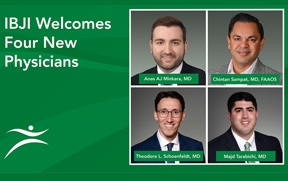Halloween is a fun time for many, especially since it can mean scary haunted houses, trick or treating, decorating, costume parties, and of course, pumpkin carving. However, few are aware that this fun seasonal activity can result in serious hand injuries. When the Research Institute at Nationwide Children’s Hospital in Columbus, OH conducted a study examining holiday-related pediatric injuries, they found Halloween was one of the top three holidays producing ER visits, with the highest percentage of injuries being to the finger and hand.
According to the American Society for Surgery of the Hand (ASSH), pumpkin carving can result in serious cuts, which may cause damage to nerves, tendons, and even bones. The most common accidents associated with pumpkin carving are stab wounds, especially among children ages 10-14.
Since, all it takes is a quick slip for an injury to occur, it is necessary to be cautious and attentive while carving pumpkins. The ASSH recommends the following safety tips.
5 Tips to Safely Carve a Pumpkin
- Carve in a clean, dry, well-lit area to prevent slipping of the pumpkin or the knife.
- Always provide adult supervision for children.
- Let adults handle all carving. Children can help draw patterns, scoop out the insides and decorate the pumpkin once it has been carved.
- A sharper knife is not necessarily better because it can become wedged in the thicker part of the pumpkin, requiring force to remove it.
- Use a pumpkin carving kit that includes a small, serrated pumpkin saw. They are less likely to get stuck in the thick pumpkin tissue.
What to do when a carving injury occurs?
In the event of a pumpkin carving accident, it is best to visit your local urgent care facility like IBJI’s OrthoAccess for immediate treatment. In most cases, treatment will include stopping any bleeding, cleaning the wound, and possibly stitching the cut depending on the severity. While some injuries are minor, others may involve nerves and tendons in the fingers that require additional follow up with an orthopedic hand specialist. In these cases, a hand specialist will be brought in to assess the injury and check if a tendon, blood vessel, nerves or combination of the three, have been damaged and will determine if surgery is required.
Be sure to follow the above safety tips to have a safe, accident-free pumpkin carving experience! The Illinois Bone & Joint Institute has experience working with injuries of all types and the expertise you want should an injury arise.
*This content is for information only and is not intended to replace the diagnosis, treatment, or medical advice from your treating healthcare professionals. The content does not provide medical advice, does not constitute the practice of medicine or other healthcare professional services, and does not create a doctor-patient relationship. You should not rely on this information as a substitute, nor does it replace professional medical advice, diagnosis, or treatment. If you have concerns or questions, seek the advice of your healthcare professionals. If you think you may have a medical emergency, call your doctor or 911 immediately. Do not rely on electronic communications or communicate through this website for immediate, urgent medical needs. This website is not designed to facilitate medical emergencies. The use of the information is at the reader’s own risk. The links are provided for information and convenience only. We cannot accept responsibility for the sites linked or the information found here. A link does not imply an endorsement of a site.




